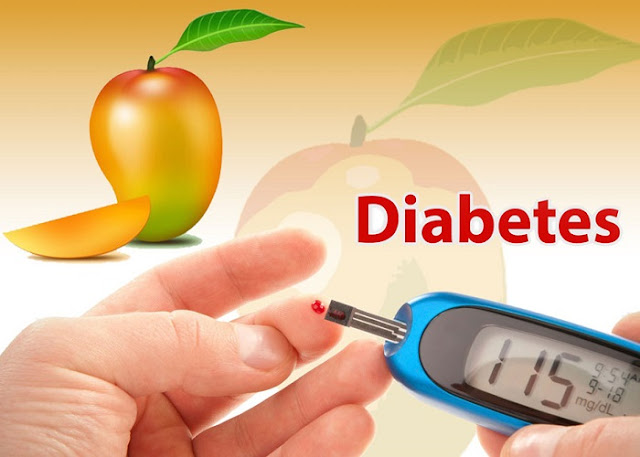PART : 1 કસરત ડાયાબિટીઝ અને થાઇરોઇડમાં કેવી રીતે મદદ કરે છે, કસરતના પ્રકાર અને ફાયદા. / PART: 1 How exercise helps with diabetes and thyroid, types and benefits of exercise.
BY DIETICIAN HIRAL RAFALIYA APEX CLINIC
કસરત ડાયાબિટીઝ અને થાઇરોઇડમાં કેવી રીતે મદદ કરે છે?
ડાયાબિટીસના દર્દીઓમાં શારીરિક પ્રવૃત્તિ લોહીમાં શર્કરા/ગ્લુકોઝના વ્યવસ્થાપન અને ડાયાબિટીસ અથવા પ્રી-ડાયાબિટીસ ધરાવતી વ્યક્તિઓમાં એકંદર સ્વાસ્થ્ય માટે મહત્વપૂર્ણ છે.
કસરતની ભલામણો તેમજ કસરત દરમિયાન ધ્યાનમાં રાખવામાં આવતી સાવચેતીઓ દર્દીની લાક્ષણિકતાઓ અને આરોગ્યની સ્થિતિ પર આધારિત છે.
દરેક દર્દીની વિશિષ્ટ જરૂરિયાતોને પહોંચી વળવા માટે શારીરિક પ્રવૃત્તિ અને કસરતની ભલામણો વ્યક્તિગત હોય છે.
કસરતનાં ફાયદાઓ
o લોહીમાં શર્કરા નિયંત્રણમાં સુધારો કરે.
o હૃદય અને રક્તવાહિનીઓના જોખમના પરિબળોમાં ઘટાડો કરે.
o વજન ઘટાડવા માટે ફાળો આપે છે.
o એકંદર સ્વાસ્થ્યમાં સુધારો કરે .
o પ્રકાર-૨ (ટાઈપ-૨) ડાયાબિટીસના વિકાસને અટકાવે અથવા વિલંબિત કરે.
o દર્દીઓમાં રક્તવાહિની તંદુરસ્તી, સ્નાયુઓની તાકાત અને ઇન્સ્યુલિન સંવેદનશીલતામાં સુધારો.
શારીરિક કસરતના પ્રકારો
o એરોબિક કસરત (ચાલવું, સાયકલ ચલાવવું, જોગિંગ અને સ્વિમિંગ કરવું)
o સંતુલન, પ્રતિકાર પ્રવૃત્તિઓ, અન્ય લવચીકતા વાળી કસરતોનું સંયોજન (તાઈ ચી અને યોગા)
o સંતુલન વ્યાયામ (ચાલમાં લાભ આપે અને પડતા અટકાવે)
o લવચીકતા વાળી કસરતો (સાંધાની ગતિમાં સુધારો)
o પ્રતિકાર (તાકાત) તાલીમ (મુક્ત વજન વળી કસરત, વજન મશીન, શરીરનું વજન અથવા
સ્થિતિસ્થાપક પ્રતિકાર બેન્ડ સાથે કસરત)
એરોબિક કસરતના ફાયદા
o માઇટોકોન્ડ્રિયલ ઘનતા, ઇન્સ્યુલિન સંવેદનશીલતા, ઓક્સિડેટિવ એન્ઝાઇમ્સ, રક્તવાહિનીઓનું પાલન અને પુનઃસક્રિયતા, ફેફસાની કામગીરી, રોગપ્રતિકારક શક્તિ અને હૃદયના આઉટપુટમાં વધારો કરે છે.
o પ્રકાર-૧ (ટાઇપ-૧) ડાયાબિટીસમાં, તે કાર્ડિયોરેસ્પિરેટરી ફિટનેસ માં વધારો કરે છે, ઇન્સ્યુલિન પ્રતિકારઘટાડે છે અને લિપિડસ્તર અને એન્ડોથેલિયલના કાર્યમાં સુધારો કરે છે.
o પ્રકાર-૨ (ટાઈપ-૨) ડાયાબિટીસમાં , તે HBA1C, ટ્રાઇગ્લિસરાઇડ્સ, બ્લડ પ્રેશર અને ઇન્સ્યુલિન પ્રતિકારને ઘટાડે છે.
પ્રતિકાર (રેઝિસ્ટન્સ) કસરતના ફાયદાઓ

o સ્નાયુ સમૂહ, શરીરની રચના, શક્તિ, શારીરિક કાર્ય, માનસિક આરોગ્ય, અસ્થિ ખનિજ ઘનતા, ઇન્સ્યુલિન સંવેદનશીલતા, બ્લડ પ્રેશર, લિપિડ પ્રોફાઇલ અને રક્તવાહિની આરોગ્યમાં સુધાર કરે છે.
o પ્રકાર-૧ (ટાઈપ-૧) ડાયાબિટીઝમાં, તે કસરત દ્વારા પ્રેરિત હાયપોગ્લાયકેમિઆના જોખમને ઘટાડવામાં મદદ કરી શકે છે.
o પ્રકાર-૨ (ટાઈપ-૨) ડાયાબિટીસમાં, તે ડાયાબિટીસ અને ન્યુરોપેથી ધરાવતા પુખ્ત વયના લોકોમાં ગ્લાયસેમિક નિયંત્રણ, સંતુલન, ન્યુરોપેથિક લક્ષણો અને જીવનની ગુણવત્તાના કેટલાક પરિમાણોમાં સુધારો કરે છે.
અન્ય પ્રકારની કસરતનો ફાયદો
o ખેંચાણ/સ્ટ્રેચિંગ વાળી કસરત સાંધાની આસપાસ ગતિની શ્રેણીમાં અને લવચીકતામાં વધારો કરે છે પરંતુ ગ્લાયકેમિક નિયંત્રણને અસર કરતું નથી.
o સંતુલન તાલીમ, પેરિફેરલ ન્યુરોપથી હોવા છતાં પણ, સંતુલન અને ચાલમાં સુધારો કરીને પડવાના જોખમને ઘટાડી શકે છે.
o જૂથ વ્યાયામ (પ્રતિકાર અને સંતુલન તાલીમ, તાઈ ચી વર્ગો) પાડવાના જોખમને 28-29% સુધી ઘટાડી શકે છે.
o યોગ પ્રકાર-૨ (ટાઈપ-૨) ડાયાબિટીઝવાળા પુખ્ત વયના લોકોમાં ગ્લાયસિમિક નિયંત્રણ, લિપિડ સ્તર અને શરીરની રચનામાં સુધારણાને પ્રોત્સાહન આપી શકે છે.
o તાઈ ચી તાલીમ ડાયાબિટીઝ અને ન્યુરોપથીવાળા પુખ્ત લોકોમાં ગ્લાયસિમિક નિયંત્રણ, સંતુલન, ન્યુરોપેથિક લક્ષણો અને ગુણવત્તાયુક્ત જીવન સુધારી શકે છે.
How exercise helps in diabetes?
Physical activity in diabetes patients is critical for blood glucose management and overall health in individuals with diabetes and prediabetes. Exercise recommendations as well as precautions to be observed during exercise are dependent on the characteristics and health status of the patient.
Physical activity and exercise recommendations have to be tailored to meet the specific needs of each patient.
The benefits of exercise include:
1. Improved blood glucose control
2. Reduced cardiovascular risk factors
3. Contributes to weight loss
4. Improved well-being
5. Prevent or delay development of type 2 diabetes
6. Improved cardiovascular fitness, muscle strength and insulin sensitivity in patients with
TYPES OF PHYSICAL EXERCISE
Aerobic exercise (walking, cycling, jogging and swimming)
Balance, resistance activities, others combine flexibility (Tai Chi and Yoga)
Balance exercise (benefit gait and prevent falls)
Flexibility exercises (improve motion around joints)
Aerobic exercise benefits
Increases mitochondrial density, insulin sensitivity, oxidative enzymes, compliance and reactivity of blood vessels, lung function, immune function and cardiac output.
2. In type 1 diabetes, it increases cardiorespiratory fitness, decreases insulin resistance and improves lipid levels and endothelial function.
3. In type 2 diabetes, it reduces A1c, triglycerides, blood pressure and insulin resistance.
Resistance exercise benefits
1. Improvement in muscle mass, body composition, strength, physical function, mental health, bone mineral density, insulin sensitivity, blood pressure, lipid profiles and cardiovascular health
2. in type 1 diabetes, it can assist in minimizing risk of exercise-induced hypoglycemia.
3. in type 2 diabetes, it improves glycemic control, balance, neuropathic symptoms and some dimensions of quality-of-life in adults with diabetes and neuropathy.
Benefits of other types of exercise
1.Stretching increases range of motion around joints and flexibility but does not affect glycemic control.
2. Balance training can reduce falls risk by improving balance and gait, even when peripheral neuropathy is present.
3. Group exercise interventions (resistance and balance training, Tai Chi classes) may reduce falls by 28-29%.
4. Yoga may promote improvement in glycemic control, lipid levels and body composition in adults with type 2 diabetes.
5. Tai Chi training may improve glycemic control, balance, neuropathic symptoms and quality-of-life in adults with diabetes and neuropathy





.jpg)


Comments
Post a Comment